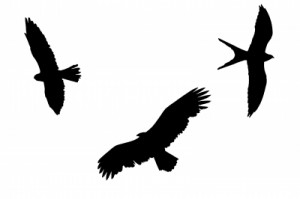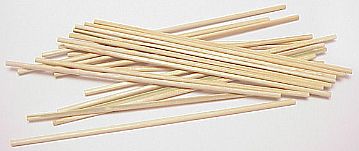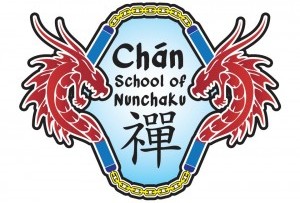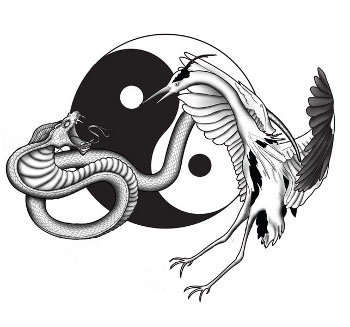Origins
The origins of Yin-Yang go back almost 5000 years when people observed that by day the sun would shine and farmers would work on the land, and by night, the sun would seemingly disappear and everyone would sleep. Yin was equated with day time, light, heat and activity. Yang was equated to night time, cold and passivity.
Taijitu
The sign for Yin-Yang, known as the Taijitu or the ‘diagram of the supreme ultimate’ has never been credited to any individual or specific time. Its origins are unknown and similar symbols have appeared in various cultures around the world; not just in China.
Philosophy
The Taijitu is intended to illustrate a universal truth; how the universe is in constant flux and a yet a harmony is maintained. The practice and philosophy known as Taoism (Daoism) emerged as a way for mankind to find spiritual peace by being in harmony with the Tao (the ‘way’. or the ‘natural balance’, the unwordable truth of the universe).
Tao Te Ching
The main text for Taoists is called the Tao Te Ching and is roughly translated as ‘The Great Book of the Way and Moral Virtue’ and is credited to Laozi – better known as Lao Tzu or ‘Old Master’. Whether such a person really existed is not known for certain but the text is known to date back to the 6th Century BC.
What is Yin-Yang?
 In simple terms Yin-Yang describes the universal balance of opposites and the constant interplay between them. Day and night, hot and cold, male and female, action and passivity etc. It is said that the only constant is change. Day time never lasts for ever. At the same time each polarity will contain a little of the other; for example the extremely cold temperature of -100°C does actually contain quite a lot of heat compared to ‘Absolute Zero’ which is -273°C. More importantly, the polarities are seen to depend on each other for their own existence. You can’t experience happiness without also experiencing sadness; what goes up must come down and everything is relative.
In simple terms Yin-Yang describes the universal balance of opposites and the constant interplay between them. Day and night, hot and cold, male and female, action and passivity etc. It is said that the only constant is change. Day time never lasts for ever. At the same time each polarity will contain a little of the other; for example the extremely cold temperature of -100°C does actually contain quite a lot of heat compared to ‘Absolute Zero’ which is -273°C. More importantly, the polarities are seen to depend on each other for their own existence. You can’t experience happiness without also experiencing sadness; what goes up must come down and everything is relative.
Hawks and Doves
A lovely illustration of Yin-Yang appears in the Hawk/Dove theory. Imagine a universe made only of hawks and doves. Initially the hawks would feast together on the doves. As this continued the dove population would decline while the hawk population would increase. This trend would eventually cause a dove shortage and the over populated hawk population would turn on itself while competing for the prey. The dove population would start to rise again until there would be so many doves that the hawks would stop fighting each other, and enjoy growth again while they preyed on the abundant dove population. Notice how there would never be situation where only doves existed or only hawks existed. As doves increase, hawks decrease. Then hawks increase while doves decrease…and so on ad infinitum.

Yin-Yang and Divination
Since Yin-Yang was seen to be the driving force behind every aspect of the universe, then it was believed that the same principle could be used for prediction. By using a combination of long and short sticks that were thrown on the ground, the patterns created would be used for divination purposes. The sticks would be thrown, a pattern would be identified and cross referenced with a book that would give guidance. This book is known as the I-Ching or Great Book of Change.

Yin-Yang and Martial Arts
The principles of Yin-Yang and Taoism provide the backdrop and foundation for Taijiquan (Tai Chi), a martial art where the practitioner moves through various forms and steps. There is an ebb and flow to the movement and while forms or steps can be clearly identified each ‘set’ is performed as one continuous movement. Taijiquan is supposed to balance the Yin-Yang within the body and mind, enhancing spiritual, mental and physical well-being. This is done by redirecting ‘chi’ (life force) internally.
Yin-Yang and Nunchaku
In order to improve in kobudo training and especially with dynamic weapons like nunchaku the practitioner needs to be sensitive to the forces and dynamics of the nunchaku. By cultivating a meditative spirit those forces can be detected and worked with. Yin-Yang can be felt in the pull and push of the nunchaku as they swing; and by tuning into these forces – the ‘tao’ of the nunchaku – the practitioner can become ‘at one with the tao’ and will move as one with the nunchaku. Zen or Chán meditation train us how to be more sensitive to reality in the present moment. What we find, is the ‘tao’ or the true path.
Yin-Yang and Life
By understanding that we cannot be excited all the time, we can accept boredom as a part of life. By understanding that there are elements of Yin in Yang and vice versa, we can better judge when to be more passive and when to be more active, when to assert and when to yield. We see this in inter-personal relationships, in business, in teaching and training and in martial arts combat.
Pictures – Thanks to Anders Holmqvist at www.cmykillustration.se for the yin-yang, crane vs snake illustration.
Thanks also to Gualberto107 for the Hawks illustration, digitalart for the Thermometer illustration -both at FreeDigitalPhotos.net .


 Follow
Follow